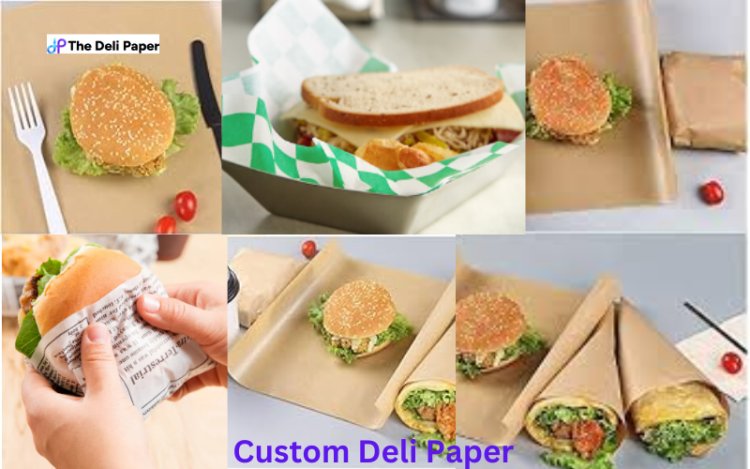Why Wax Paper is Preferred Over Parchment Paper for Certain Tasks
Wax Paper
Share this Post to earn Money ( Upto ₹100 per 1000 Views )

When it comes to baking and cooking, the choice of paper can significantly impact the outcome of various tasks. Two commonly used types of paper in kitchens are wax paper and parchment paper. While both serve useful purposes, wax paper is often preferred for specific tasks due to its unique properties. This article will explore the reasons why wax paper is favored over parchment paper for certain applications.
Understanding Wax Paper and Parchment Paper
What is Wax Paper?
Wax paper is made from thin sheets of paper that have been coated with a layer of wax, typically paraffin. This coating gives wax paper its moisture-resistant and non-stick properties, making it ideal for various kitchen tasks. Wax paper is commonly used for wrapping food, lining countertops, and even for crafts.
What is Parchment Paper?
Parchment paper, on the other hand, is made from cellulose fibers that are treated with acid to create a heat-resistant surface. It is often used in baking as a non-stick surface for cookies, cakes, and other baked goods. Parchment paper is also moisture-resistant but can withstand higher temperatures compared to wax paper.
Key Differences Between Wax Paper and Parchment Paper
Heat Resistance
One of the primary differences between wax paper and parchment paper is their heat resistance. Parchment paper can endure high temperatures, typically up to 425°F (220°C), making it suitable for baking. Wax paper, however, is not designed for high heat and can melt or catch fire if exposed to direct heat. This limitation makes wax paper unsuitable for oven use.
Moisture Resistance
Both wax paper and parchment paper have moisture-resistant qualities, but wax paper offers a superior barrier against moisture. The wax coating on wax paper seals the paper, preventing moisture from penetrating. This makes it ideal for tasks where food needs to be stored or wrapped, especially in humid conditions.
Non-Stick Properties
While both types of paper provide non-stick surfaces, wax paper is particularly effective for tasks like rolling out dough or sticking together layers in a recipe. The wax coating helps to prevent sticking without the need for additional grease or flour. Parchment paper also has non-stick properties but is more suited for baking applications.
Applications Where Wax Paper Excels
Food Storage
When it comes to food storage, wax paper is often the preferred choice. Its moisture barrier helps keep food items fresh longer. For example, wrapping sandwiches in wax paper can prevent them from becoming soggy, making it ideal for lunchboxes or picnics. Additionally, wax paper can be used to store cut fruits and vegetables, maintaining their freshness.
Craft Projects
Wax paper is not only a kitchen staple but also a popular choice for various craft projects. Its flexibility and non-stick surface make it ideal for activities like melting crayons or creating wax paper art. The ease of use and availability of wax paper in different sizes contribute to its popularity in crafting.
Lining Countertops
When preparing messy ingredients or rolling out dough, wax paper can be laid down on countertops to create a non-stick surface. This is particularly useful for tasks like making candies or working with sticky substances. The cleanup is simple—just remove the wax paper and toss it away.
Microwave Use
Wax paper is safe to use in the microwave, making it a great option for covering dishes while reheating food. It helps to prevent splatters and keeps moisture in, ensuring that food remains moist. Parchment paper is not typically recommended for microwave use due to its higher cost and less effective moisture retention.
Limitations of Wax Paper
While wax paper has many advantages, it is essential to recognize its limitations. The most significant drawback is its inability to withstand high temperatures. Using wax paper in the oven can lead to melting and potentially dangerous situations. Therefore, it is crucial to use wax paper only in tasks where it will not be exposed to direct heat.
When to Use Parchment Paper Instead
Baking
For baking tasks, parchment paper is the clear choice. Its ability to withstand high temperatures makes it perfect for lining baking sheets and cake pans. Cookies baked on parchment paper are less likely to stick, and the paper helps ensure even cooking. Parchment paper is also useful for steaming food, as it allows for moisture retention without compromising the food's texture.
Cooking Techniques Requiring Heat
Any cooking technique that requires direct heat, such as roasting or broiling, is best suited for parchment paper. Its heat resistance ensures that it will not break down or release harmful substances into the food, unlike wax paper.
Conclusion
In summary, while both wax paper and parchment paper have their unique applications in the kitchen, wax paper is preferred for certain tasks due to its moisture resistance, non-stick properties, and versatility in food storage and craft projects. However, it is essential to remember that wax paper should not be used in high-heat situations, where parchment paper excels.
Choosing the right type of paper for specific tasks can enhance your cooking and baking experience. By understanding the strengths and limitations of each type of paper, you can make informed decisions that lead to better outcomes in the kitchen. Whether you’re wrapping a sandwich, lining a countertop, or baking cookies, knowing when to use wax paper versus parchment paper can make all the difference.















